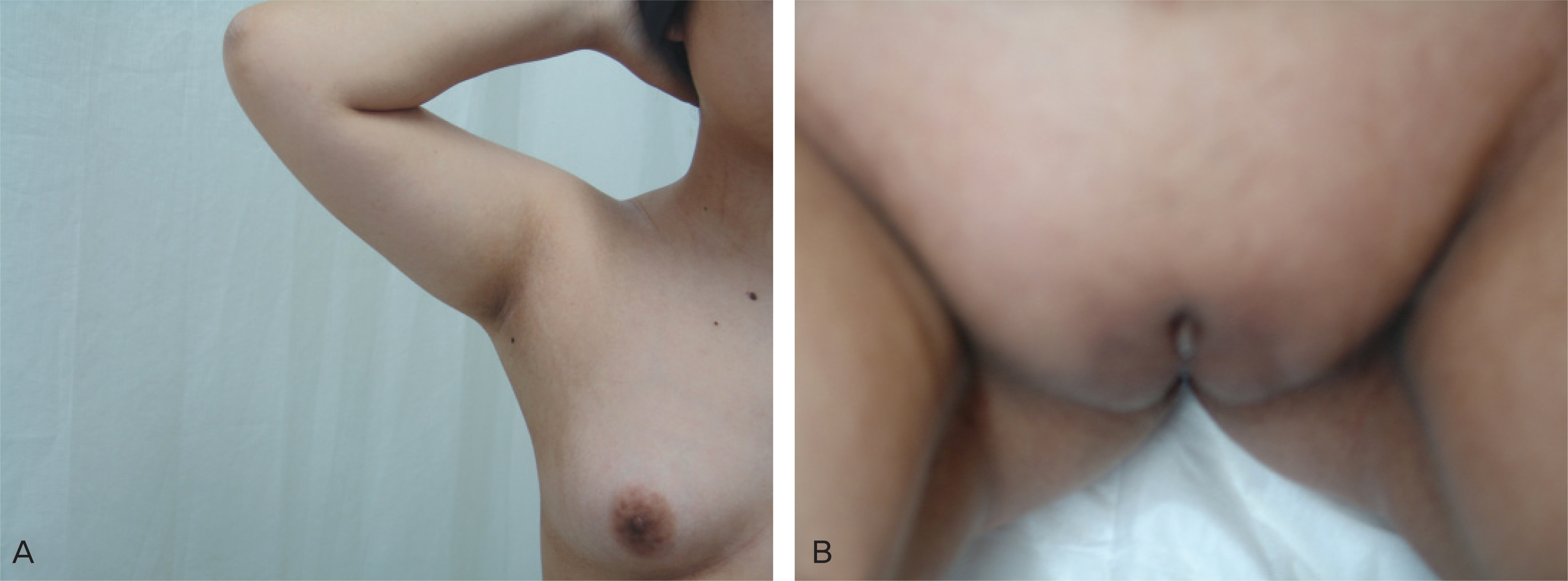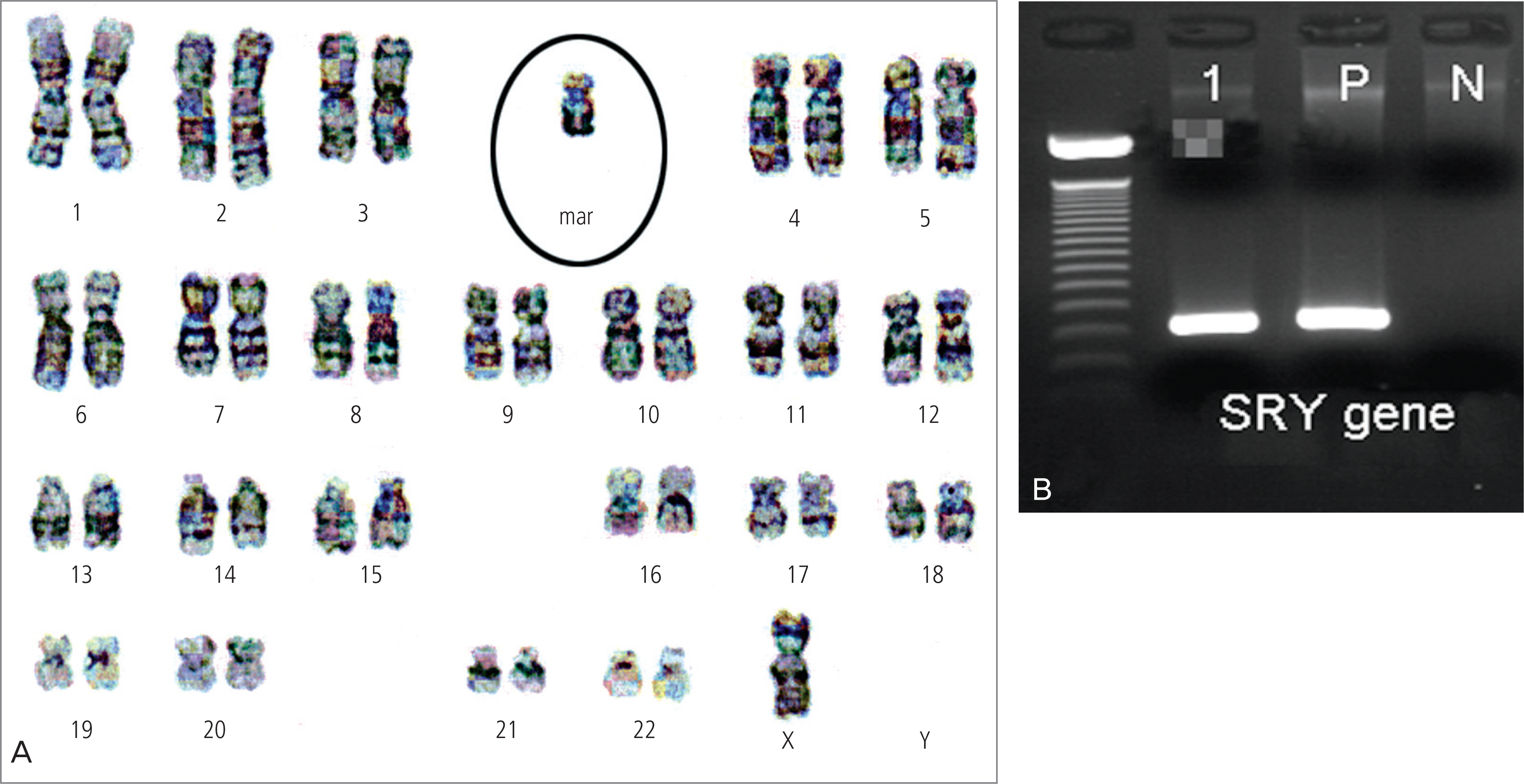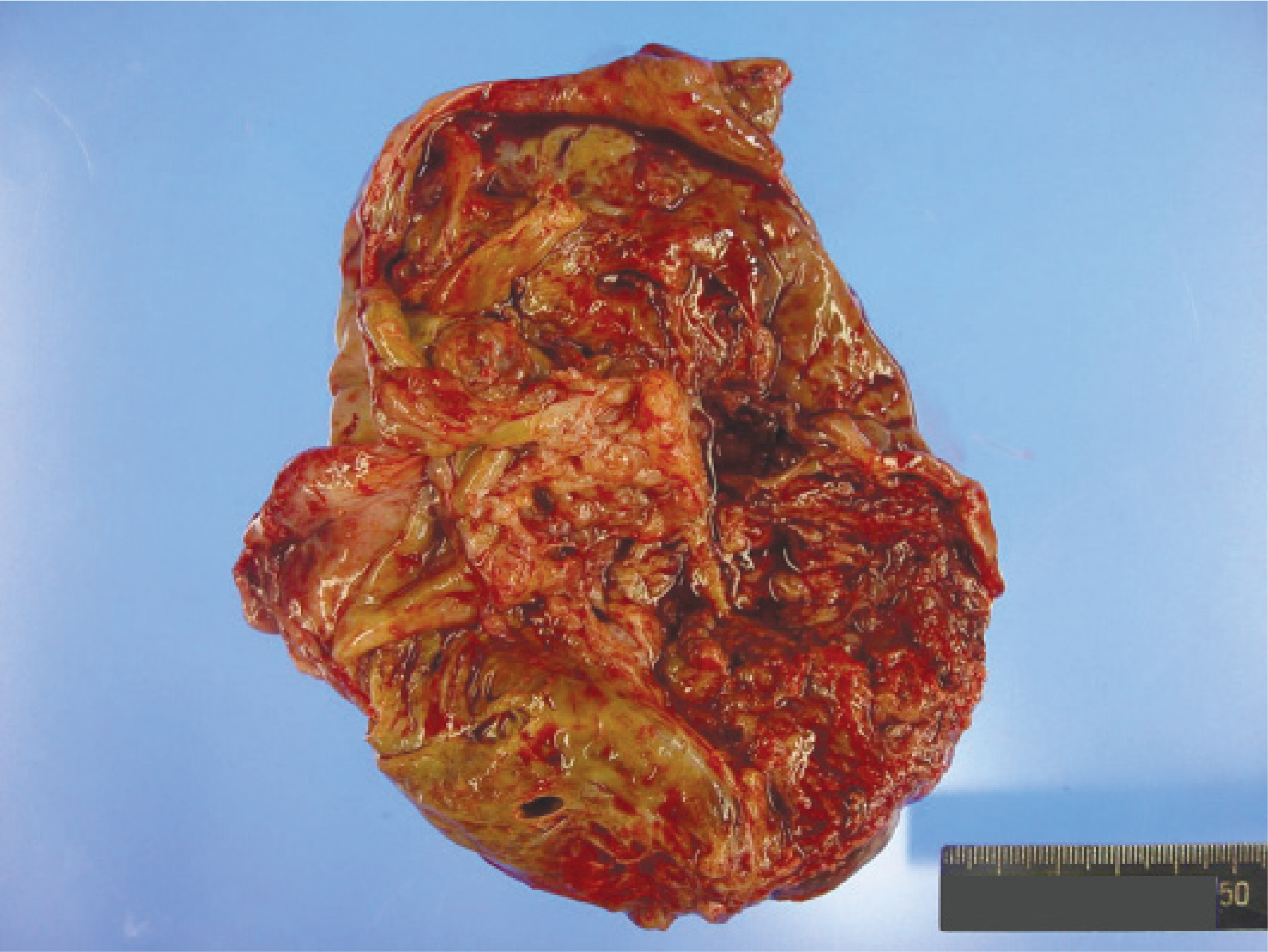Korean J Obstet Gynecol.
2011 Aug;54(8):468-473. 10.5468/KJOG.2011.54.8.468.
Ovarian mixed germ cell tumor in a patient with 45,X/46,X,+mar mosaic Turner's syndrome
- Affiliations
-
- 1Department of Obstetrics and Gynecology, Catholic University of Daegu School of Medicine, Daegu, Korea. leets@cu.ac.kr
- 2Department of Pathology, Catholic University of Daegu School of Medicine, Daegu, Korea.
- KMID: 2274069
- DOI: http://doi.org/10.5468/KJOG.2011.54.8.468
Abstract
- We report a case that mixed germ cell tumor developed in an 18-year-old girl with 45,X/46,X,+mar mosaic Turner's syndrome. Molecular biological studies showed that the patient's DNA contained a fragment of Y chromosome. The patient underwent an operation and chemotherapy, and until now there is no evidence of recurrence. A presence of Y chromosome component should be evaluated in case a marker chromosome is found in a woman with Turner's syndrome.
Keyword
MeSH Terms
Figure
Reference
-
1. Kim SC, Park SS, Kim KH, Park DY, Yoon MS. A case of coincidental gonadoblastoma and dysgerminoma in 45X/47XYY mosaic Turner variant. Korean J Obstet Gynecol. 2005; 48:1805–10.2. Cho YY, Cho CH, Yu SD, Kim HM, Park JB. A case of variants of Turner syndrome showing 46,X,inv(Y)/45,X karyotype with Y chromosome microdeletion. Korean J Obstet Gynecol. 2006; 49:892–8.3. Korean Society of Obstetrics and Gynecology. Gynecology. 4th ed.Seoul: Korean Medical Book Publisher;2007.4. Ito K, Kawamata Y, Osada H, Ijichi M, Takano H, Sekiya S. Pure yolk sac tumor of the ovary with mosaic 45X/46X + mar Turner's syndrome with a Y-chromosomal fragment. Arch Gynecol Obstet. 1998; 262:87–90.5. Sinisi AA, Perrone L, Quarto C, Barone M, Bellastella A, Fag-giano M. Dysgerminoma in 45,X Turner syndrome: report of a case. Clin Endocrinol (Oxf). 1988; 28:187–93.
Article6. Pierga JY, Giacchetti S, Vilain E, Extra JM, Brice P, Espie M, et al. Dysgerminoma in a pure 45,X Turner syndrome: report of a case and review of the literature. Gynecol Oncol. 1994; 55:459–64.
Article7. Oliveira RM, Verreschi IT, Lipay MV, Eca LP, Guedes AD, Bianco B. Y chromosome in Turner syndrome: review of the literature. Sao Paulo Med J. 2009; 127:373–8.
Article
- Full Text Links
- Actions
-
Cited
- CITED
-
- Close
- Share
- Similar articles
-
- Mixed Germ Cell Tumor in a Patient with Turner Syndrome
- A Case of mos 45,X/46,X, +mar. ish der(X)(wcpX+) Turner Syndrome
- A Case of Ovarian Mature Cystic Teratoma in Woman with Turner syndrome
- Clinical and Cytogenetic Features in Turner Syndrome
- A case of 45,X/47,XXX mosaic Turner syndrome: Clinical manifestations and effect of growth hormone treatment






